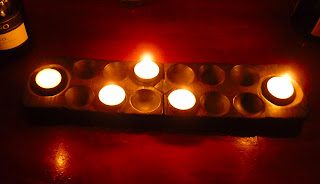Yellem is an Amharic word.
It’s a handy little word to know. The rough translation is “none”, “there is no…” ,“we don’t have any..”
There is a lot of yellem in Addis. Here are a few examples:
1. There is a cute
little pizza stall/restaurant close to our house called Yoni’s. Yoni’s has two things on the menu; pizzas and
sodas. Yesterday Yoni’s pizza house had
“yellem” pizza .
2. One fine day at work, I needed something copied. Surprisingly
it is a bit of a production to do this; one has to obtain permission by getting
various forms stamped with an official blue stamp. After completing the numerous procedures in a
not too timely fashion, I arrived at the photocopy station with my blue stamped
papers. I was then told there was
“yellem” power, so “yellem” photocopying.
3. The last time we
were at the Mekele airport there was “yellem” to everything on the menu.
4. Luckily, in our neighbourhood we don’t often have “yellem”
power or water (only occasionally). However, when this happens we seem to have
“yellem” working flashlights and “yellem” matches in the house.
5. There is generally
a lot of “yellem” in our little grocery store.
At any rate, the list goes on. Initially, all this yellem caused some slight
angst, but we have become used to it. We
now hardly bat an eyelash when we can’t order anything from a menu.
Our friend Brian says we need to get signs printed for
various establishments that say: “YES, WE HAVE YELLEM”. I think that would be a good idea.
Yellem photos for this post :).
























































